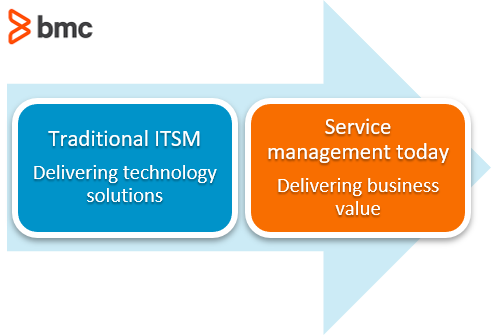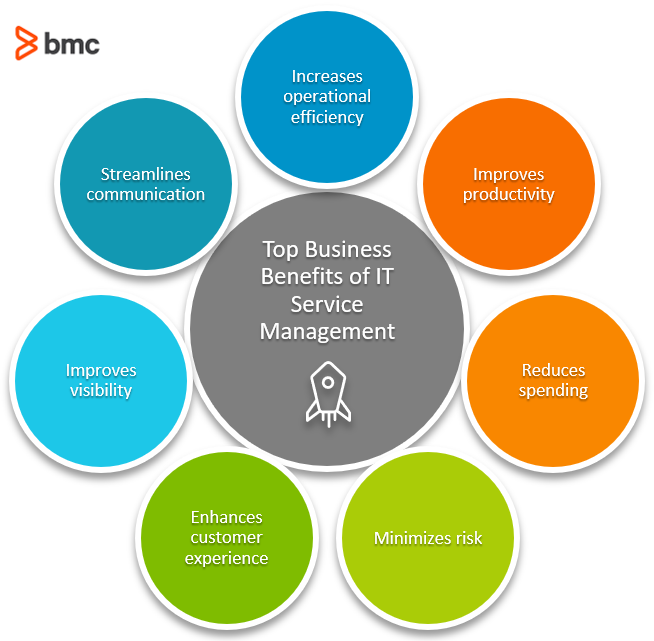With IT functions increasingly embedded into daily business operations, organizations already know the necessity of adopting IT service management (ITSM) best practices.
Historically, ITSM was all about IT improvement. But today, more than ever, service management drives the entire business. In fact, service management is one of the most critical practices any organization must have.

We’ve put together some of the top business benefits of IT service management for the modern enterprise, including improved efficiency, magnified insights, and increased effectiveness.
Let’s take a look!
(New to service management? Start with ITSM frameworks & implementation.)
Increases operational efficiency
One of the top benefits of IT service management is improving operational efficiency. It’s no secret that for most organizations, it doesn’t seem like there is enough time in the day to get everything done. By harnessing service management best practices, however, you’ll enable your company to:
- Maximize value from the resources you have
- Greatly improve workflows
Just one example is the IT asset management practice in ITSM. Asset management is a set of processes that optimize the lifecycle management of IT assets. It also seeks out the most cost-effective strategies for both disposition and asset procurement, allowing for the streamlining of resources and expenses.
Improves employee & company productivity
Once operations are performing efficiently, you’ll see improvements in employee productivity. The practices and guidelines from ITSM programs provide IT managers a baseline for how to measure both:
- The effectiveness of team members
- The performance of the services
Another outcome of a structured service management practice is that you’ll have a formal incident response practice. This helps to:
- Decrease average incident response time
- Reduce the mean time to recover when a service interruption does occur
Reduces spending
A major benefit of ITSM for organizations is cost reduction.
For a lot of companies, IT operations and infrastructure are a major percentage of spending. This number will only continue to rise as the company increases in size and maturity in the IT services and equipment they require.
By automating traditionally manual procedures and work processes with ITSM, organizations are able to reduce reliance on some employee functions, freeing up current staff members from tedious, repetitive tasks to use their skills in other areas.
Minimizes risk
For companies who implement changes—which is to say, all—the risk that can come with any given change can feel disastrously high, particularly if the change is poorly planned, tested, or communicated to the business and team members.
With service management, the chances of significant interruptions to services or the business are greatly reduced. The formalized policies, processes, and roles all work together, providing strong communication to customers and stakeholders throughout the change management process.

Enhances the customer experience
With operations performing efficiently and employee productivity improved, you’ll certainly see an overall increase in customer satisfaction.
With less interruptions in service delivery and faster responses, customers can see improvements in their daily activities including minimal service outages and 24/7 availability. Should a ticket be submitted, the incident management process helps to ensure that the IT team responds to every service request and incident report, further enhancing the customer experience.
Improves visibility
From a staff and management perspective, service management structures provide better visibility into what has been achieved and what hasn’t.
This full transparency allows…
- Team members to see each other’s progress and know where each person is in the process,
- Managers to easily track the progress of a project (which is especially beneficial as more teams are distributed and working remotely)
ITSM also offers increased insights into data and analytics, providing a view into:
- What tasks consume too much time or resources
- What workflows need to be improved
- Further tasks and processes that could be automated
Streamlines communication
Finally, IT service management streamlines communication…
- Among team members, through enhanced visibility and collaboration channels
- For management, through increased transparency and uniform procedures
- For customers, through faster incident responses and quicker resolutions
Service management provides business value
Simply put, ITSM provides countless advantages that only continue to add value as technology is added and matures.
With improved operational efficiencies, increased staff productivity, reduced risk, and higher customer satisfaction, IT service management will help take organizations from functional to exceptional.
Related reading
- BMC Service Management Blog
- The State of ITSM Today
- ITIL & ITSM Roles and Responsibilities
- What Are The Goals of ITIL®?, part of our ITIL 4 Guide
- Agile ITSM: How Agile & Service Management Can Work Together
- Top ITSM Trends







